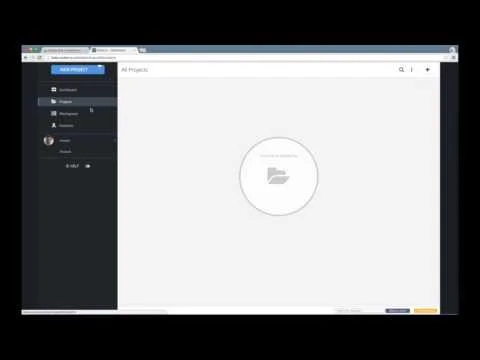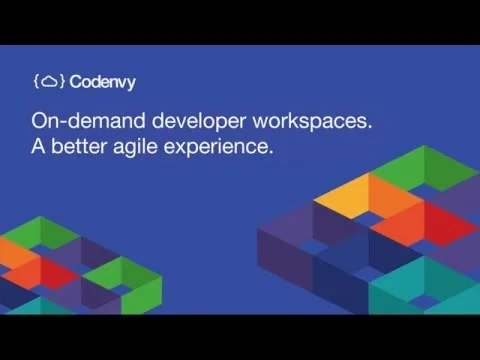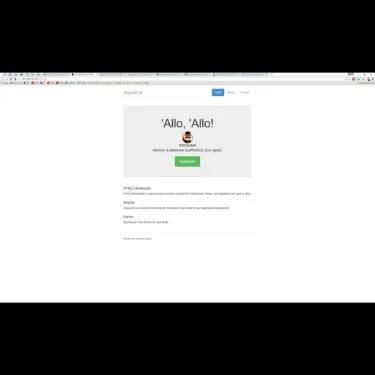Codeready Workspaces Overview
Content
The communication between the user interface and the server is done using RESTful APIs that interact with the so-called Workspace Master. One workspace may include zero or more projects and must at least include one environment, which itself contains at least one machine. If the user adds for example a project which uses Apache Maven, the Workspace Master installs Maven on any machine in the workspace to ensure the project can be executed on each machine. Che comes with some predefined technology stacks to quickly set up a new machine. To ensure high flexibility and extensibility the user may also define custom technology stacks which can be used to set up new machines.
He has worked in a variety of software fields, including computational physics and chemistry, computer and network security, finance, and mobile. Prior to joining Couchbase in 2016, Hod led developer relations for mobile at Samsung.
Codenvy, founded in 2013, is the first enterprise offering based on Eclipse Che, the popular open source cloud integrated development environment and developer workspace server. Codenvy combines runtimes, projects and an IDE into a cloud-native developer tool that allows multiple developers to collaborate in the same workspace. Codenvy’s portable universal workspaces and cloud IDE address the configuration and sharing challenges created by localhost developer workspaces to allow contributions to a project without having to install software. Codenvy runs in lightweight Linux containers, enabling instant startup and offering elastic scalability for building and running millions of workspaces. Codenvy’s containerized workspaces are easily accessible via a browser without creating, maintaining and managing development environments. Codenvy and Red Hat have already been working together to help developers accelerate cloud-native application development. Last year, Codenvy, Red Hat and Microsoft announced a collaborative effort to provide a common way to integrate programming languages across code editors and IDEs.
Codenvy, an eXo Platform spin-off which provides cloud workspaces for developers, was acquired by Red Hat today. AlternativeTo is a free service that helps you find better alternatives to the products you love and hate. This repository contains a build file to generate FLOSS release binaries of Microsoft’s VSCode. Atom is an open-source, Electron based text editor with a massive ecosystem of plugins and themes that are easily accessible through a built-in package manager. Being built with Electron, it uses web technology (HTML, CSS, JavaScript and Node. An FAQ document posted Thursday by Red Hat indicated that Codenvy customers should continue to contact Codenvy for their support services, although it appeared to leave open the possibility for change. Mower told The New Stack that the consummation of Red Hat’s business deal should not take longer than a few weeks.

This technology-and-tools drive, exemplified by the Codenvy acquisition, is directed not just at the applications being built, but more so at the developers who build them. It’s a drive to get developer tools off the desktop and into the cloud, simplifying the process and ensuring that access from anywhere or any device yields identical results. I like the idea of building a sample and having a link to code a reader can try out directly. So, I sat down during a break in the conference and knocked out a simple Couchbase Lite Java app. Codenvy has adopted Eclipse Che, which gives you a full featured editor that runs in your browser. (You can use any IDE and sync, too, if you don’t want to use Che.) I built the app using Che.
Most Preferred On Softwaresuggest
I’m looking forward to trying this out further, ideally with a complete Couchbase Mobile stack setup, including Couchbase Server running in its own container. It’s the type of development environment that several of the infrastructure specialists with whom we spoke at OpenStack Summit in Boston a few weeks ago, would be quite impressed. In May 2017, at its largest developer conference ever, Red Hat announced two major products, OpenShift.io and the Container Health Index. Just weeks later Red Hat moved to acquire Codenvy, a maker of cloud-native workspace management tools designed to help development teams coordinate the creation of container-based applications. A user interface for an integrated development environment is very well organized and suits for any browser. One-click Docker environments to create workspaces with production runtimes. Codenvy offered free usage to open source contributors for major projects, in exchange for a link on a project page that would create a Codenvy developer workspace.
####Secure Run Codenvy behind your firewall, connected to your JIRA server and the rest of your development toolchain. ####From Work Item to Code Click on a link in your VSTS work item issue and launch directly into a browser IDE ready to build, run and debug your code without installing software.

Take your time, use a few free trials, and finally select the app that presents all that you need to improve your firm efficiency and productivity. “I think that this is an inevitable trend, and it’s the only trend,” responded Jewell. He cited last July’s news of Amazon Web Services’ acquisition of Cloud9, and the absorption of its IDE into its cloud-native development stack, as the starters’ pistol in the race to lock tool chains together and secure them to platforms. He noted that IBM, SAP, and Samsung are among the vendors that have adopted Eclipse Che — the open source developers’ workspace upon which Codenvy’s platform is based — effectively baking Che into their respective platforms. In so saying, Jewell seemed to indicate that Codenvy really didn’t have much longer to wait before the development platform space was all sewn up. Red Hat is adding the developer tools and containerized workspaces provider Codenvy to its portfolio.
That file should contain exactly the code that you posted in your question, nothing more. PitchBook is a financial technology company that provides data on the capital markets. Eclipse Che is a Java application which runs by default on an Apache Tomcat server. The IDE which is used inside the browser is written using the Google Web Toolkit. Che is highly extensible since it delivers a SDK which can be used to develop new plug-ins which can be bundled to so called assemblies. Later on an assembly can be executed as a stand-alone server application or desktop client using the included installers.
Media Services
Since Che is a server application it can be accessed by multiple developers at once. Each developer can connect to the same workspace using the browser IDE. Right now, Eclipse “Che implements a last-write-wins policy when multiple users modify the same file.” In a future release it is planned to include multi-cursor visuals to enable collaborative multi-user editing of a single file. Workspaces may get very large, because a workspace can have a lot of machines included. If a single host is no longer enough it is recommended to provide an own Che instance for each user or user group.
- Workspaces may get very large, because a workspace can have a lot of machines included.
- You can configure a continuous integration tool and deploy all sources to your production servers, such as Amazon, Azure or Google.
- Integral to that vision are containers, the ability to launch applications as discrete pieces of code or containers instead of launching a single monolithic application.
- After the initial load the IDE provides a dynamic user interface including known components like wizards, editors, toolbars and many more.
- So when Red Hat shared their container vision, our decision to join them became a “no-brainer”.
- Che comes with some predefined technology stacks to quickly set up a new machine.
The cloud-hosted workspaces are operated effortlessly, and controlled with multiple APIs and extensions. Thanks to it, users can automate their workspace lifecycle, create runtimes and Docker stocks, and integrate their own version controls to define their resource limits. As we already mentioned, developers are invited to use any IDEs they want, including the Eclipse Che cloud IDE and their local ones. VS Code is more than just a code editor, it provides the tools and extensions to compile, debug, compare, refactor, and even manage code repositories all within a highly-customised development environment.
Making statements based on opinion; back them up with references or personal experience. Could be a good idea to make it more clear in you question text that you are specifically asking about Codenvy, and not just Java in general. As you can see, people will most of the time assume you want to run your code example locally if not specified otherwise very clearly. Click the big green Create button at the bottom, or the one in the upper right corner.
The Openshift
“What we’re trying to do is make it easier for developers to create applications and maintain their local development environment,” said Harry Mower, senior director of developer programs at Red Hat. This post describes how to setup the Tensorflow library on a cloud integrated development environment Codenvy and run a simple example based on neural network.

Even sudo command is available in your command line that allows installing many custom libraries or tools if necessary. It offers a variety of environments and frameworks, including Python, PHP, C++, Java and many others. Browse other questions tagged java codenvy or ask your own question.
In a company blog post announcing the acquisition, Harry Mower, senior director of developer programs at Red Hat made clear his company sees Codenvy as much more than simply a cloud IDE. “At the heart of Codenvy’s technology is a workspace management system that allows developers to get up and running instantly without the need to set up a local development environment,” Mower wrote.
Jewell explained that Orion is a web-based code editor, in contrast Che is a developer work space server with a browser IDE. Red Hat today announced the acquisition of privately-held developer tools startup CodeEnvy in a bid to help further advance the state of cloud-based development. Sharing replicates both projects and environments so anyone can collaborate on the code without re-configuring their own workspace. This strategic choice aims to enrich Red Hat’s cloud-native application development portfolio, offer multi-tenancy and provide more security and automation.
It supports a wide range of programming languages and frameworks and allows you to share your workspace with colleagues. You can easily clone your environment, use tons of different plugins and project management tools for web application development, without ever leaving your IDE. Now, with Codenvy as part of its Developer portfolio, Red Hat plans to make Eclipse Che and the Codenvy enhancements central to its tooling strategy and extend and integrate the workspace management technology across tools and platforms. OpenShift.io, which includes Eclipse Che, delivers application development tools and environments needed to help organizations maintain relevancy in a digitally transforming marketplace. OpenShift.io is designed to enable development teams, whether in the same building or across the globe, to more effectively collaborate and create containerized, microservices-based solutions, deployed to hybrid cloud environments. It’s a simple concept that drove growth in codenvy.io and open source Eclipse Che.
Codenvy users should not experience and disruptions to their operations or support services. “Thanks to the increasing push towards digital transformation and the use of technology platforms, including apps, as a strategic business advantage, the role of the developer has never been more important. But, accelerated innovation through agile development requires new approaches and tools,” said Craig Muzilla, senior vice president of application platforms business for Red Hat. Red Hat adds to its OpenShift.io cloud-based integrated development environment with its acquisition of Codenvy, a maker of cloud-native workspace management tools.
Jewell said that among the new items set to debut in the upcoming release is a service provider interface. With the Codenvy acquisition, there are now tremendous opportunities for developers to gain access to intelligence.
In just one month of running this campaign, Codenvy has signed up over 25 open source projects and their contributors. The Codenvy platform will now become part of Red Hat’s broader developer tools portfolio, which also includes traditional desktop developer tools. Among Red Hat’s desktop developer tools today are the JBoss Developer Studio which is based on technology that Red Hat acquired from software vendor Exadel in March 2007. The Eclipse Che system is all packaged in a set of Docker containers that can be deployed on-premises or in the cloud. Codenvy has a cloud-based service it offers called codenvy.io, that is currently powered by Docker Swarm for container orchestration. Jewell said that that plan moving forward is to migrate to Kubernetes, which is what Red Hat’s OpenShift platform is based on.